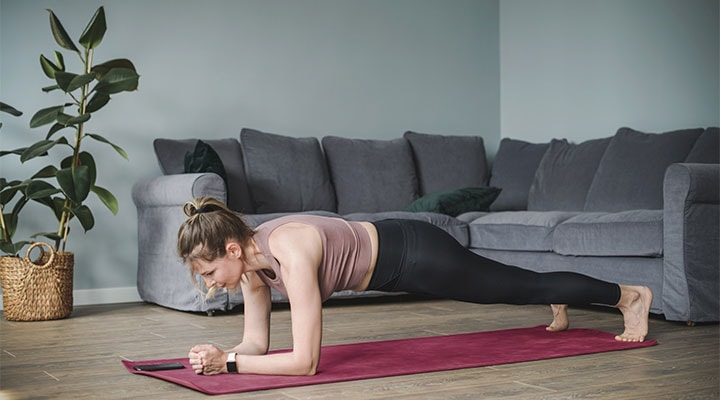Why core strengthening exercises matter at every stage of life
Building and maintaining strong core muscles is one of the best things you can do for your health and wellbeing at any age. Here’s how to strengthen your core with the right exercises for you.
Almost every move you make comes from your core, which is made up of the muscles in your abdominals and back. Strong core muscles are essential for everything from sitting and standing, to lifting heavy objects and playing sport.
Maintaining strong core muscles throughout life isn’t always easy. Life events and challenges like pregnancy, weight gain and the natural loss of muscle that comes with ageing can weaken your core, and lead to problems like lower back pain and poor posture.
“Core strength is the ability to activate the muscles in your trunk – the area between your shoulder blades and pelvis,” says exercise physiologist Kerrie Hains from Exercise & Sports Science Australia (ESSA). “If you don't maintain good core-muscle strength, it can lead to pain and dysfunction.”
Thankfully, core-strengthening exercises can help you build a strong, sturdy foundation, no matter what stage of life you’re at.

Women and core strength
For women, pregnancy can have a big impact on core muscles. “The body changes so quickly and there’s such a heavy load in the tummy and on the back, which can strain the muscles of the back,” Kerrie explains.
Then there’s the extra pressure that baby puts on your pelvic floor – a group of muscles at the base of your core.
The solution? Pelvic floor exercises. “It's essential for women to focus on the pelvic floor throughout pregnancy and post pregnancy,” Kerrie says. “Working the deep muscles around the vertebrae and pelvic floor helps to carry the load.”
Strengthening the transversus abdominis – the deepest muscle layer in your core – is also important during and after pregnancy. Kerrie recommends the ‘bird dog’.
Start on your hands and knees with a neutral spine alignment, with your back naturally curved rather than arched or flattened. Activate your core by squeezing and drawing in the muscles around your back passage and the vagina. Lift one arm with your thumb up and lift the opposite leg till straight, both parallel to the floor. Bring your arm and leg back to the ground and then repeat this movement with your other arm and leg, keeping your trunk stable.
Always consult your doctor before trying any new exercises, including during or post pregnancy, or if you have an injury. To help you with any of the core exercises in this article, see a women’s health physio or exercise physiologist.
Men and core strength
Maintaining core strength is important for both men and women, to prevent injury and improve balance and strength.
As we get older, we’re prone to carrying extra fat around the tummy. This extra weight puts pressure on the lower back. “If you’re able to strengthen your core, it can stop the tummy from pulling the back forward,” Kerrie says.
She says a plank is an ideal core-strengthening exercise for men.
Core strength as you age
As we get older, we lose muscle mass – as much as 3kg every decade from middle age. Some of this loss occurs in the core and often shows up as poor posture. “Our body can get tired of holding itself up because we’re not as strong,” Kerrie says.
She says it’s important to maintain good posture throughout the day, “rather than falling into that tired mode and the slouched posture, the hunchback, the closed chest, the rounded upper back”.
As you age and your ability to do certain exercises changes throughout your life, remember to focus your attention on maintaining your core strength as well as stretching, strength training and maintaining a healthy weight.
Words by Angela Tufvesson
First published July 2021
Related articles
Your body after birth
Here are some of the most common postnatal challenges and tips for moving forward.
What is a women’s health physio?
Have you put a health issue like incontinence or pelvic pain in the too-hard basket?
Back pain – time for surgery?
Back pain is a problem for millions of Australians. Here are some key things to consider.